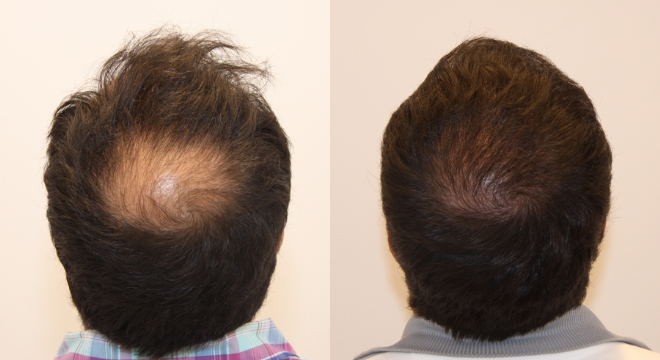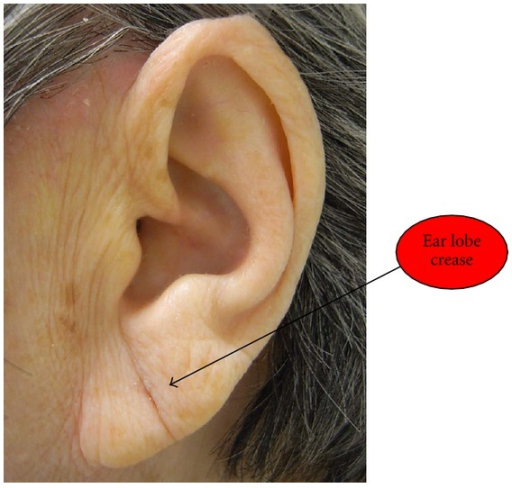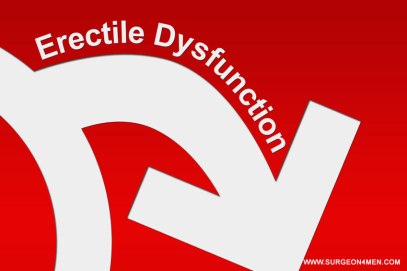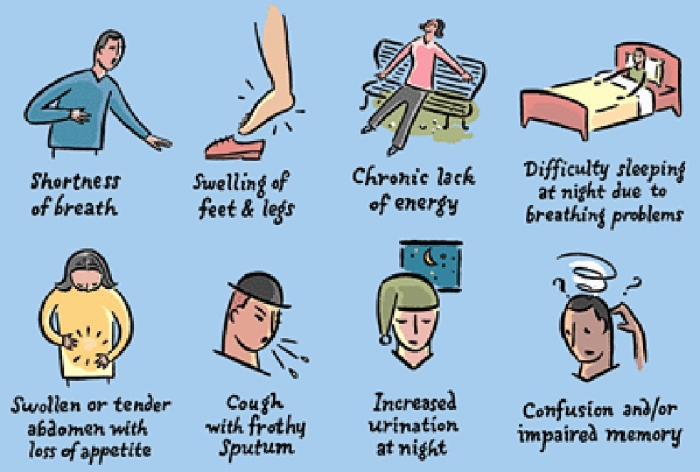EARLY PREDICTIONS OF HEART DISEASE
If you have one of the following problems, especially if you are under 40 years old, there is a high chance you have heart disease. Micro arteries are usually the first to get clogged and are difficult to spot on x-rays and blood tests. So one way of finding if there are mini artery blockages is to check to see if you have one of the following symptoms which will predict if you have heart disease. It’s not a full proof method to detect heart diseases, but if will serve as an early warning sign of future/imminent heart disease problems.
A 10 Second Mirror Test May Spot Heart Disease
When you think about checking for heart disease what probably comes to mind are expensive exams such as stress tests on a treadmill while hooked up to a high-tech electrocardiogram, cardiac catheterization or a coronary calcium CT scan. But a low-tech inexpensive look in the mirror may be more revealing than you ever imagined.
HAIR LOSS ON THE CROWN OF THE HEAD
A new study just published in the journal BMJ Open suggests that hair loss on the crown of the head might be an indicator of underlying heart disease. The investigators pooled data from six prior observational studies. A receding hair line was less problematic than baldness on the top to rear of the head (crown or “vertex” of the head). The increased risk was not huge (30 to 50%) but it was statistically significant. “Frontal” baldness was not linked to heart disease.
EAR LOBE CREASE
Another signal of heart disease may be an earlobe crease. Here is a link to see what it looks like. Researchers have been noticing an association between an earlobe crease and heart disease for nearly 40 years. The most recent report of a link came from the American Heart Association Meetings last fall. Danish investigators analyzed data from more than 10,000 volunteers participating in the Copenhagen Heart Study. Baldness on the top of the head and earlobe creases were associated with heart disease.
No one really has any good explanation for why hair loss or earlobe creases (or the Franks Sign) might be early warning signs of heart disease. The BMJ Open article proposes that high blood pressure, high cholesterol levels and atherosclerosis might also influence hair loss. That seems like a stretch. Another possible explanation is that insulin resistance leads to male pattern baldness and heart disease. Still another hypothesis is a pro-inflammatory condition is contributing to both hair loss and damage to artery walls in the heart. It has also been proposed that higher levels of male hormones (androgens) in the scalp and heart are the trigger underlying baldness and heart disease.
In a new study by Turkish researchers in the journal Angiology, 253 people with no known heart conditions but who had visible ear crease—are 10 percent more likely to suffer from blocked arteries. Earlobe creases were also more common among those suffering from the most severe arterial backups, the study authors discovered.
It’s not as crazy as it sounds. “There may be some relationship between aging of the skin and aging of the blood vessels,” says Arthur Friedlander, D.M.D., a professor of oral and facial surgery at UCLA. Friedlander has also published research on the link between earlobe creases and blocked arteries. Your earlobe is a concentrated end point for blood vessels, so if you have blood circulation problems, those blockages may show up as wrinkles in your lobes, he says.
Before you run to a mirror, understand that wrinkles are a part of aging, and the study results are far from conclusive, Dr. Friedlander warns. “An earlobe crease in conjunction with other abnormal findings like high blood pressure, or elevated weight or sugar levels, could be a subtle warning sign,” he says. But if you see a pronounced wrinkle before age 55—especially if you’re in your 40s—ask your doctor to check for heart trouble, he recommends.
A study in 1973 showed a connection between an ear crease & heart disease. Find out if a small mark on your ear could have anything to do with heart disease. http://www.healthline.com/health/heart-disease/ear-creases#1
Diagonal earlobe creases and fatal cardiovascular disease: a necropsy study.
http://www.ncbi.nlm.nih.gov/pmc/articles/PMC1216678/
FATTY DEPOSITS AROUND THE EYES
Fatty cholesterol deposits around the eyes, a condition know as xanthelasmata, were the strongest individual predictor of both heart attack and heart disease, according to data presented this week at the American Heart Association scientific meeting in Los Angeles. There was a 35-per-cent increase in heart attacks among subjects with these yellow deposits around their eyelids and baggy eyes, which could be signs of cholesterol buildup, researchers found.
Xanthelasma is a common condition among the elderly and those of Mediterranean or Asian descent. The condition occurs slightly more often in men than in women, usually in people over the age of forty. When a xanthelasma reaches a certain size and becomes nodular, it is sometimes referred to as a xanthoma, but these are two distinct conditions; xanthoma is a broader term for a wider classification of skin growths that can occur anywhere on the body.
ERECTILE DYSFUNCTION
You may be aware that the inability of your arteries to dilate fully and to subsequently harden, also known as atherosclerosis, is a major cause of heart disease and can lead to stroke, heart attack and sudden death.
In a nutshell, this occurs because as the inner lining of your blood vessels (endothelium) undergoes damage and dysfunction and plaque accumulates, the subsequent narrowing and hardening of your arteries makes it harder for blood to flow through them and reach your heart and other organs.
As the disease process unfolds the smaller arteries in your body, such as those in your penis, often get blocked first, before the larger arteries leading to your heart.
The lack of blood flow to the penis results in erectile dysfunction, and this is why ED has been called the “canary in the trousers” for future heart problems. If you have any type of erection difficulty, it’s a good idea to see a qualified health care practitioner who can give your heart health a thorough check-up and help you develop a plan to fix the underlying causes of both issues.
The researchers found that the men with severe erectile dysfunction, compared to those with no problem, were eight times more likely to have heart failure, 60 percent more likely to have heart disease and almost twice as likely to die of any cause.
OTHER EARLY TELL-TALE SIGNS OF HEART DISEASE

Other tell tale signs of heart disease or even heart attacks are:
- Shortness of breath
- Swelling of feet and legs
- Chronic lack of energy
- Difficulty sleeping at night due to breathing problems
- Swollen or tender abdomen with loss of appetite
- Cough with frothy sputum
- Increased urination at night
- Confusion and/or impaired memory
So keep an eye on these predictors of heart disease so you can take corrective action to prevent the disease from getting worse through proper diet and nutritional supplementation.
Medicines should be the last resort because there’s a lot of side effects in taking these medications.
teamrich.wordpress.com – EARLY PREDICTIONS OF HEART DISEASE





